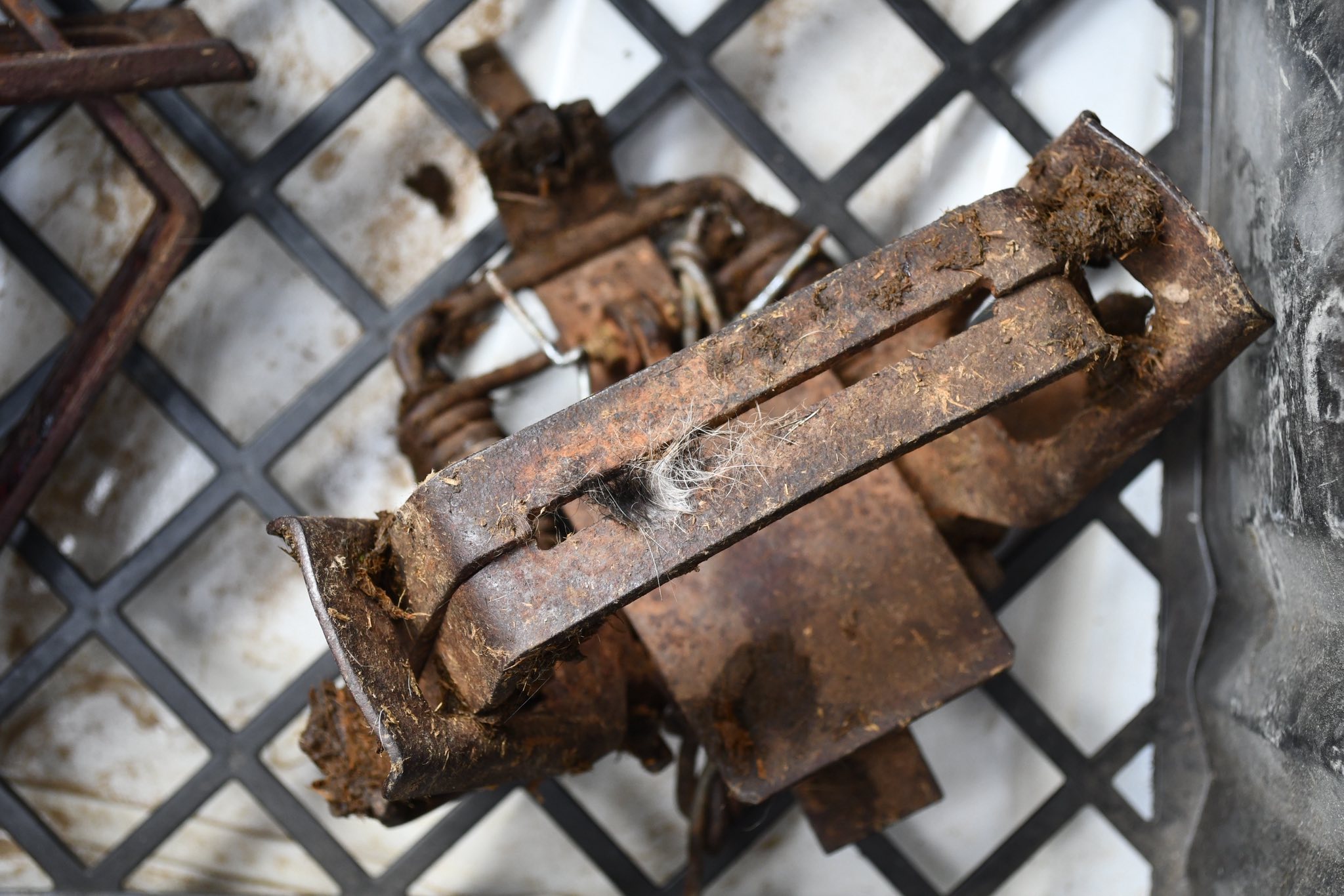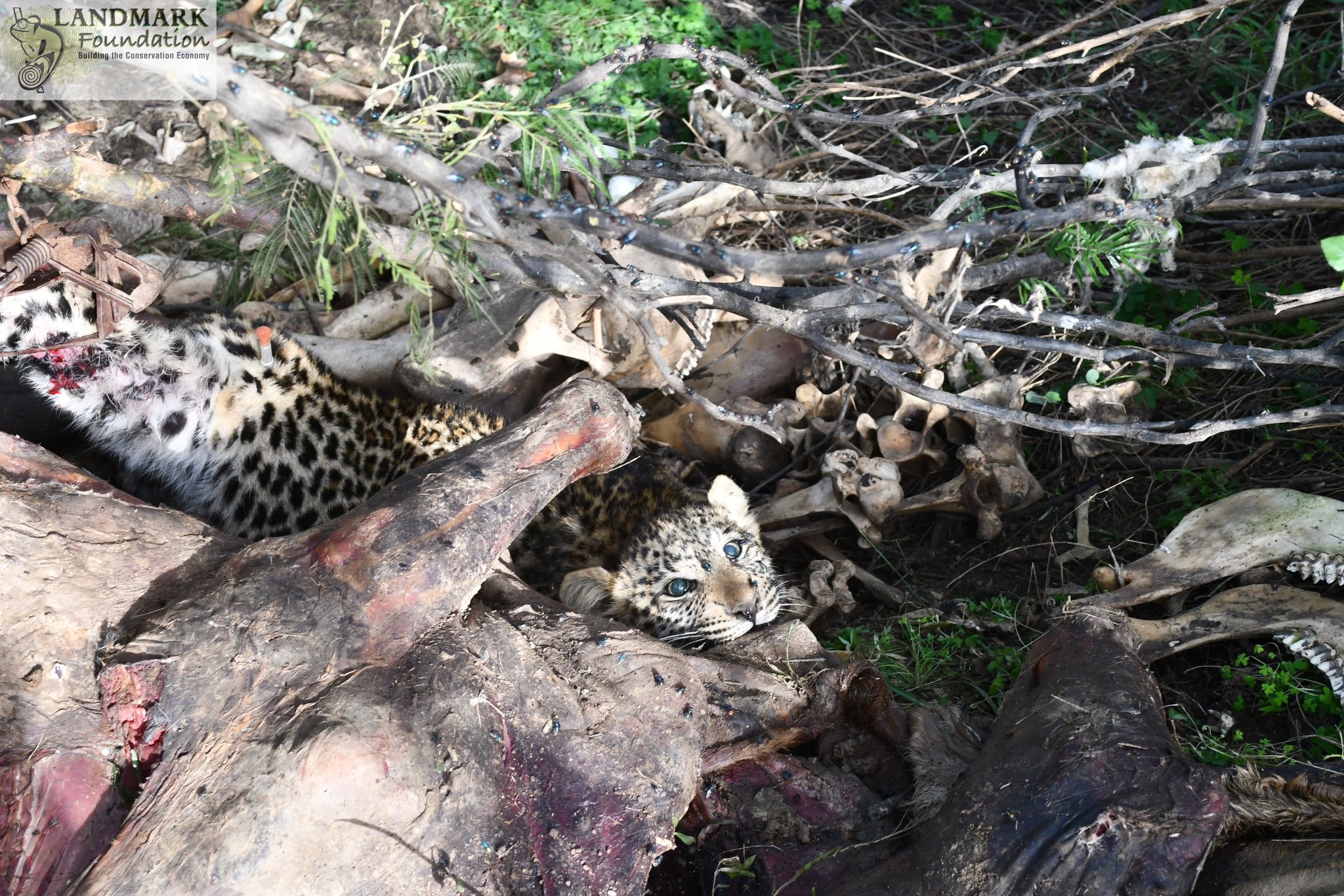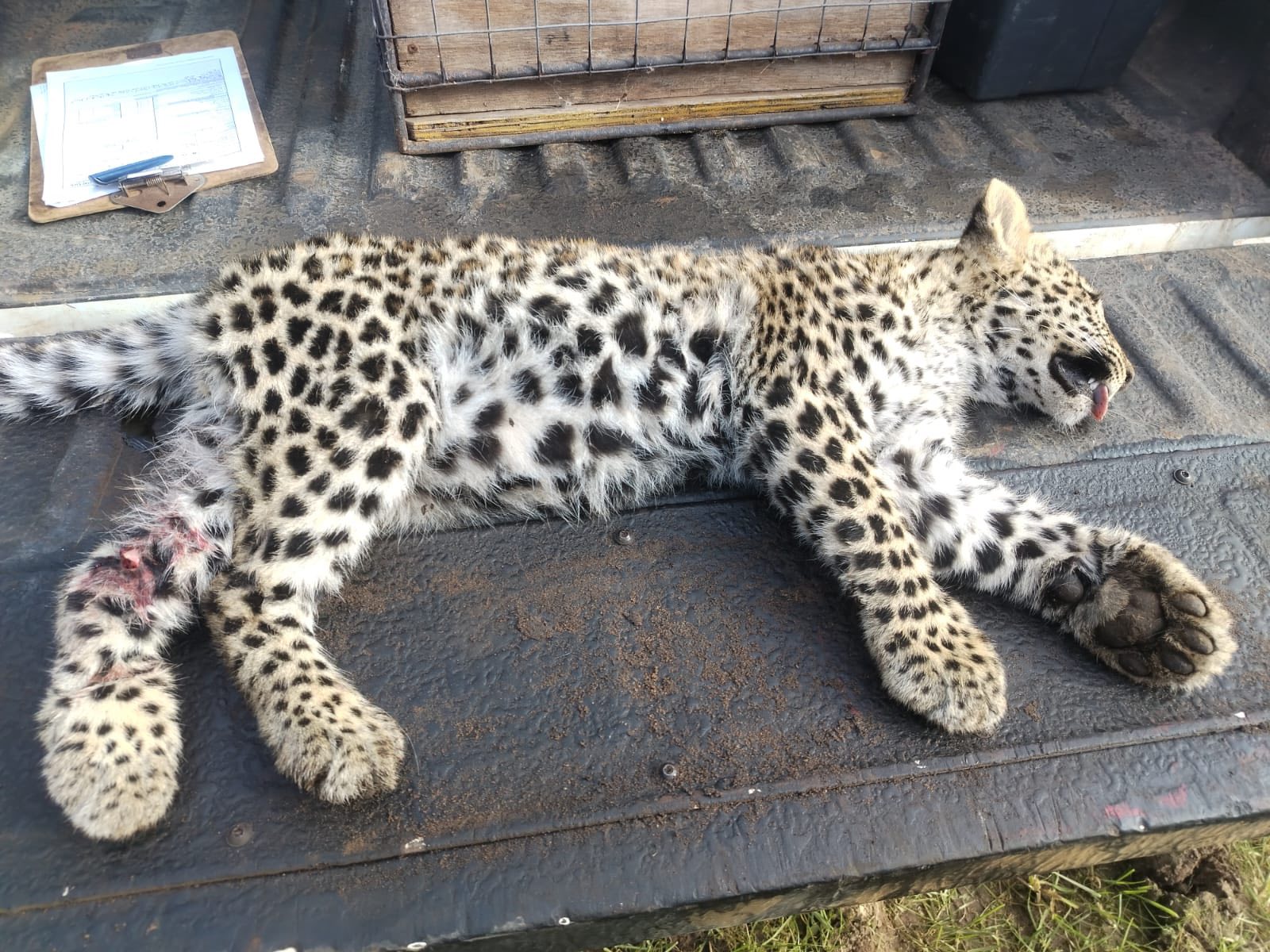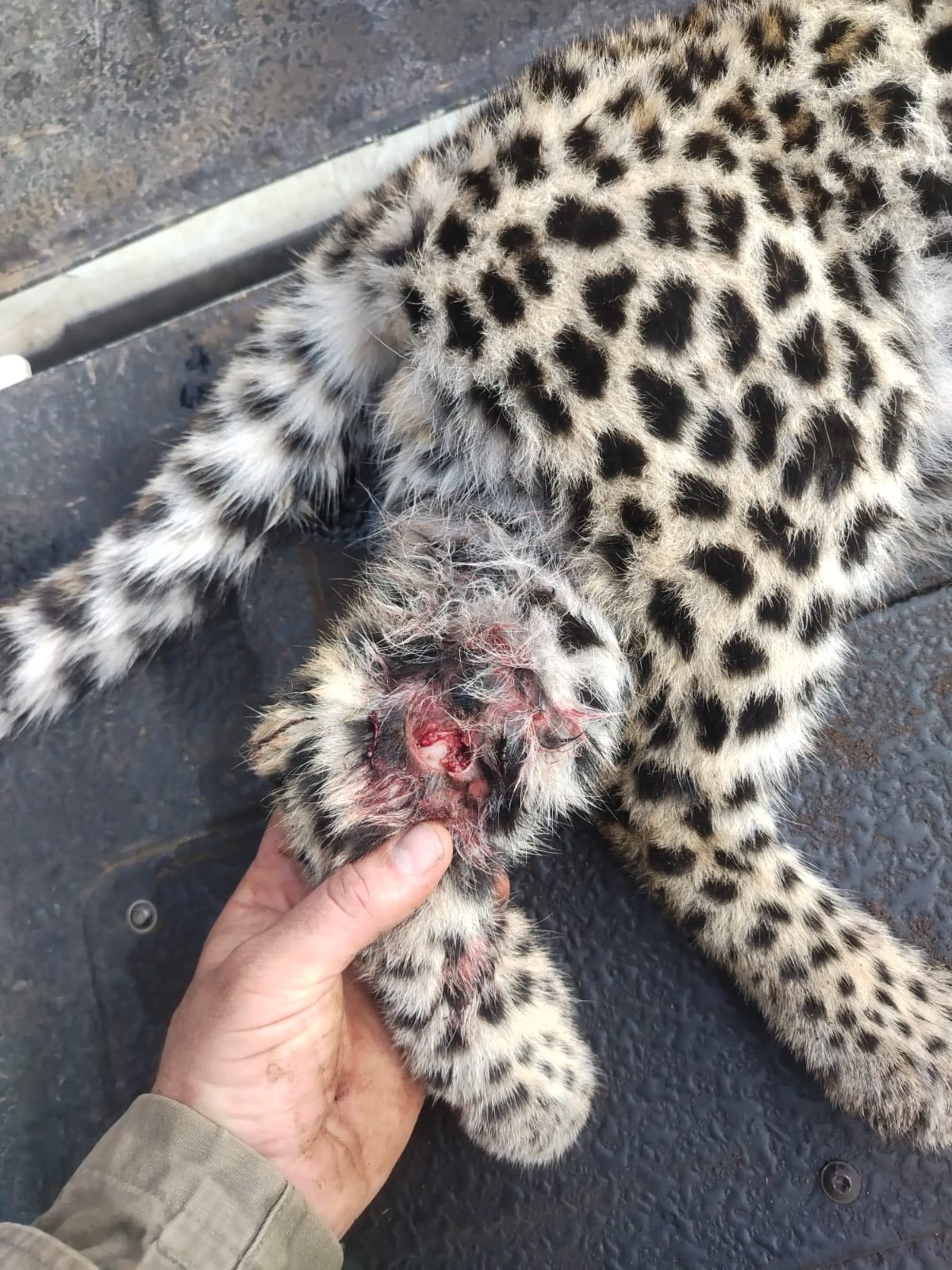WILDLIFE NEWS - In response to a media statement issued on behalf of CapeNature yesterday, 10 July, Bool Smuts of the Landmark Foundation has stressed the role that Landmark played in two recent leopard events, one tragic and one with a happy ending.
Here follows the full statement posted on the Facebook page of the Landmark Leopard and Predator Project - South Africa on 4 July, just two days after a young leopard died after being caught in a gin trap near Heidelberg:
On 2 July at 11:50, we received a notification from CapeNature: a leopard had been caught in a gin-trap in the upper reaches of the Duiwenhoks River Catchment near Grootvadersbos, Heidelberg, Western Cape.
These are among the most distressing messages we receive. The injuries from these indiscriminate, archaic devices are often catastrophic.
We mobilised immediately -securing a vet, personnel and equipment - and were on site by 12:30.
It is illegal to use gin traps in the Western Cape without permits. It is illegal to use cage traps without permits. It is illegal to capture a leopard without permits. It is illegal to kill a leopard without a permit. It is illegal to torture an animal at all times.
 These devices kill everything - they are indiscriminate and barbaric.
These devices kill everything - they are indiscriminate and barbaric.
We trust these crimes will be properly investigated and prosecuted. We will agitate for it.
The farmer explained that one of his livestock had died of natural causes. He arranged for the carcass to be dumped at the designated disposal site, where a worker noticed that something had recently fed on it.
In response, the farmer placed two gin-traps adjacent to each other and a baited cage trap to catch whatever had been feeding off a dead carcass.
It is clear from this act that a biodiversity extermination intent was present. The next morning, the farmer found a leopard in the gin-traps.
 The cub did not survive.
The cub did not survive.
The vet arrived and, despite poor visibility as the leopard was partially concealed in the bushes, managed to dart it in the back left leg.
A few minutes later, we were able to approach the animal and assess the damage.
The reality was horrific. The leopard did not survive. It was a leopard cub - only around six months old or a little younger.
Its front and back left legs were clamped in the brutal metal jaws of two gin traps that had been set adjacent to each other.
The injuries were catastrophic - compound comminuted fractures and a crushed front paw.
These barbaric devices inflict unspeakable pain and suffering. They don’t just kill. They torture.
This young leopard didn’t kill the cow - it scavenged the carcass which was dumped by the farmer, just as any opportunistic predator would. And for that, it was mutilated and died.
 Its front and back left legs were clamped in the brutal metal jaws of two gin traps.
Its front and back left legs were clamped in the brutal metal jaws of two gin traps.
It is 2025. Landmark has spent twenty years calling for these cruel devices to be banned. They are archaic, brutal, and unnecessary.
These traps are manufactured by Peter Schneekluth in Prince Albert and as can be seen from the photos are the “Terminator” traps sold by him.
There are countless non-lethal, proven methods to reduce livestock losses - yet gin-traps remain a default tool across the livestock industry.
These traps have been rebranded as ‘soft gin-traps’ ......... They are so named to greenwash the barbaric nature of the tools ....... to keep these tools active in the country. [Some content of the last two sentences have been omitted]
The original Afrikaans name still provides the most accurate description: "Slagyster" - "Slaughter iron".
This incident is a grim reminder of the brutal reality of human-caused wildlife mortality on production landscapes.
It is unacceptable. It is indefensible. And it is happening far too often.
CapeNature, as a regulatory body for biodiversity, is investigating the case under laws prohibiting the use of such hunting methods without permits.
The farmer was “apologetic” once his abject cruelty was demonstrated and the unlawfulness of his actions were revealed - but what exactly did he think would happen, setting lethal traps at a carcass recently visited by a leopard or caracal?
It’s reckless at best, and knowingly destructive, unlawful and inhuman at worst.
Yes, this farmer has had livestock losses to predators like jackal, caracal, and leopard.
But setting these indiscriminate killing devices because an animal died of natural causes, and a wild animal scavenged on its remains dumped by him, reflects either desperation or a disturbing lack of concern for the consequences in terms of the law, biodiversity or compassion.
And this is not an isolated case - these traps are widely used across livestock farms in South Africa.
 There are many alternative, ethical ways to protect livestock that don’t involve brutal killing.
There are many alternative, ethical ways to protect livestock that don’t involve brutal killing.
At Landmark, we’ve been working for years to change these attitudes - to shift toward ethical, non-lethal alternatives that actually work.
These include:
- Visual, sounds, and scent deterrents
- Guarding animals
- Livestock barrier collars
- Human herders
- Husbandry practices
These alternatives are cheaper, more effective, and ethical. They are also socially acceptable - something slagysters or “soft” gin-traps will never be.
Gin-traps are not just outdated - they are everywhere.
In one area alone, Landmark helped to remove over 220 gin-traps from just 11 farms encompassing around 60 000 ha where farmers had agreed to stop using them. This would make it 1 gin trap per 300ha on farms. It’s a gauntlet for wildlife.
Let’s be clear: these devices kill everything - they are indiscriminate and barbaric.
They have no place in a society that claims to be civilised. They have no place in agriculture that feeds local populations and exports produce globally.
These practices make a mockery of "sustainable farming" and show just how far behind the industry still is and how resistant they are to change their ways.
Please, please, please
We urge the industry to stop producing food at the cost of biodiversity and in disregard for animal welfare. We call on farmers to take responsibility - the direct users of the land to use alternative, ethical ways to protect livestock that don’t involve brutal killing.
And we call on consumers to support only those producers who coexist with nature, not those who slaughter it and torture animals.
We are trying to work with the farmer to assist him in employing alternative tools and want to go a long way to changing this narrative with him and other farmers.
We wish to plead with farmers to please contact Cape Nature and Landmark for help and don’t set gin traps.
This was a completely unnecessary death and NO WINNERS!
Please consider supporting our work and feel free to contact us: +27 83 324 3344 / bool@landmark.org.za / landmarkfoundation.org.zaleopard
- The leopard event with a happy ending took place in early April when a leopard that had mauled young calves on a dairy farm, were captured and collared and released back into the wild. Since being collared the mature male of 47.5kg in prime condition, has not attacked any livestock.
The Landmark Foundation is a conservation NGO that promotes and facilitates conservation land uses and rewilding.
‘We bring you the latest Garden Route, Hessequa, Karoo news’
















